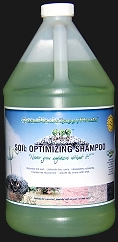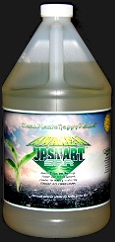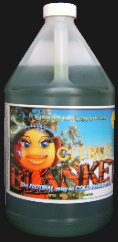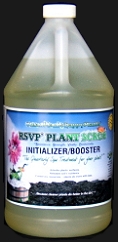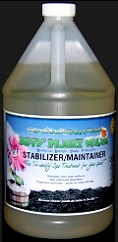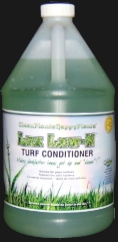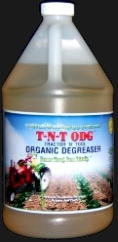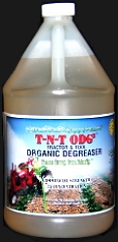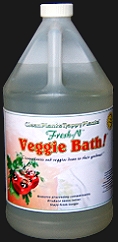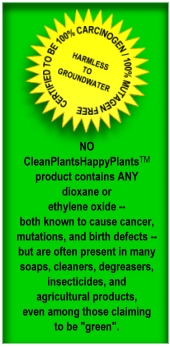This ever increasing use of toxic
chemical based pesticides is taking its toll.
For example, the total number of pesticide poisonings in the U.S. is estimated at 300,000 per year
(EPA).

Worldwide, the use of pesticides
causes 26 million instances of non-fatal
poisonings annually (Richter, 2002), of which 3 million are
hospitalized,
750,000 come down with chronic illnesses and 220,000 die. (Hart
and Pimental, 2002).
Truly, we are kidding ourselves
when we think
that we can load up the porous surfaces of the food we eat with
dreadfully
toxic solutions and not have some or a substantial amount of those
products absorb into the food and wind up ingested when we
eat. And this is to
say nothing of the horrific
damage to our waterway and ground water supplies as these poisons make
their
way into the water we use to bathe and drink.

It should come as no surprise that multiple
chemical sensitivity (MCS) is a sinister, quietly growing
problem, both
for adults in business and industry, and children at school. It is an
insidious
disease that can totally incapacitate its victim without warning and,
in most
cases, defy diagnosis.
People with MCS may develop
myasthenia gravis, a neuromuscular
disorder, or more
traditional illnesses such as asthma, multiple sclerosis, chronic
dermatitis, porphyria,
Parkinson’s or Alzheimer’s disease, severe
anemia, Lupus or cancer, depending on the nature and duration of the
chemical
exposure and the vulnerability of the target systems.
|

Bacteria,
organophosphates, viruses, solvents, radiation, trans fatty acids in
processed
foods - they are all very similar, when seen in the light of the
fundamental
concept first expounded by Hippocrates 2,500 years ago, that an
exterior agent,
hostile to an organism’s ability to function, may cause disease or
systemic
malfunction.
Today
approximately 80,000 synthetic chemicals exist which had not yet been
invented in 1950, when DDT was the most widely used toxic chemical.
Since 1960,
in the U.S. alone, the production of
synthetic chemicals, which eventually find their way into the soil, air
and water has risen from
10 billion pounds per year to the
current estimate of 35 billion pounds. Of these, only about 600 are known
to be carcinogenic, neurotoxic
and/or teratogenic, because the rest have never been tested for
safety! [Full article here.]
It should also be noted that the testing protocol used by government in
ascertaining the safety of these products is essentially unchanged from
the late 1940's.
In an
article entitled, “The Invisible
Epidemic: Global Acute
Pesticide Poisoning”, authors Margaret
Reeves, Kirsten Schwind,
and Renata Silberblatt make the following
observation.
| Unlike
many diseases, pesticide poisoning is completely preventable. People
can make
decisions either to release hazardous pesticides into the environment,
or to
replace them with least toxic alternatives. Meanwhile, millions of
victims of
pesticide poisoning suffer in anonymity, while pesticide manufacturers
disingenuously insist that their products are “safe if used as
directed.” [Full
article here.] |
What if,
rather than a least
toxic alternative, there were a NON-toxic
answer -- one that REALLY worked?
<--Back
Next-->
|











